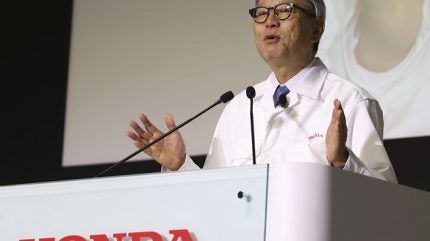
Japanese carmaker Honda Motor Company has confirmed it is eager to step up its collaboration with Nissan Motor on a broad range of projects globally, despite the collapse of merger talks between the two companies earlier this year.

Discover B2B Marketing That Performs
Combine business intelligence and editorial excellence to reach engaged professionals across 36 leading media platforms.
A merger between Honda and Nissan would have brought significant cost-saving synergies, from sharing research and development costs, supply chains, production and sales networks, and new product development, at a time when they are facing an unprecedented surge in global competition from Chinese automakers. The two companies failed to agree on the terms of the merger, with Honda expecting to become the majority shareholder in a merged company, which Nissan was unable to accept.
Honda’s market capitalisation, currently at just under JPY 8 trillion (US$ 54 billion), dwarfs Nissan’s JPY 1.14 trillion. Honda, which also makes consumer products and motorcycles, produced 3.7 million vehicles in 2024 – 20% more than Nissan’s 3.1 million units.
In the first five months of 2025, Honda reported a 9% drop in global vehicle output to 1.45 million units, while Nissan reported a 13% decline to 1.19 million units – in both cases driven lower mainly by plunging sales in China. The companies have so far struggled to keep up with the strong, Chinese-led growth in the global battery electric vehicle (BEV) segment.
Maximising global synergies while retaining independence
Honda and Nissan, along with the latter’s Alliance partner Mitsubishi Motors, are keen to maximise global synergies as independent companies – as part of a looser alliance also involving other companies. At the company’s annual shareholders’ meeting in June, Honda’s CEO Toshihiro Mibe confirmed the automaker is still “eager” to collaborate with Nissan and with its alliance partner Mitsubishi Motors where possible. But he ruled out the possibility of renewed efforts to merge with Nissan, at least “for the time being.”
Honda and Nissan have long been collaborating well before their merger talks became public last year. The have worked together on a wide range of projects including the production of mini vehicles and light commercial vehicles, and the development of battery electric vehicles (BEVs), hybrid powertrain systems, and autonomous driving technologies.
Nissan recently revealed it is currently considering supplying pickup trucks to Honda from its US plant in Canton, Mississippi, for Honda to sell in the US market. This would help both companies reduce the impact of the new US import tariffs introduced by US President Donald Trump, as well as improve capacity utilisation at the Nissan plant.
Nissan has already agreed to produce a rebadged version of its Rogue SUV in the US for Mitsubishi Motors, with sales scheduled to start later this year, as well as its next generation Leaf battery electric vehicle (BEV) from the second half of 2026.
Honda and Nissan are discussing extending their US collaboration to other market segments in the US, as well as in other global regions. The two companies are also considering collaborating in the development of a new basic software platform for advanced vehicle controls, as they prepare to launch software-defined vehicles (SDVs) in the second half of the decade. Honda had previously indicated that it planned to launch battery electric vehicle (BEV) models equipped with its own SDV software from 2026.
The development and operation of SDVs requires huge amounts of data, so maximizing economies of scale by cost-sharing is seen as key to competing in this emerging segment of the market. Chinese automakers and Tesla are seen as leading the way in this emerging segment, while Toyota Motor is understood to be considering sharing its SDV software with Mazda.
Mibe summed up Honda’s position as he told reporters at the shareholders’ meeting: “We want to secure a leading competitive edge in the industry by maximising the merits brought on by the collaboration.”






